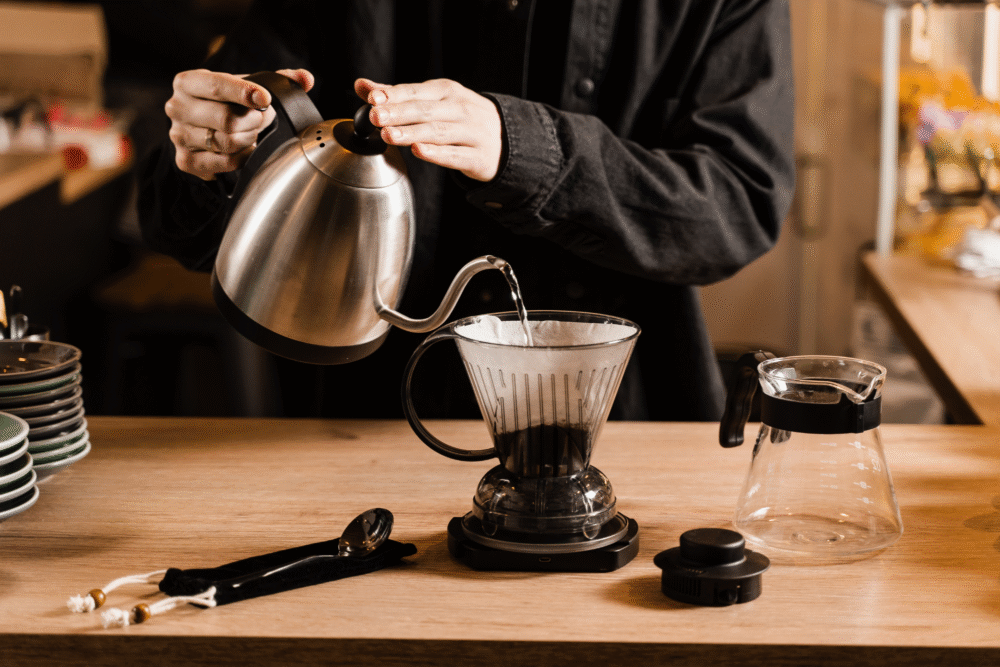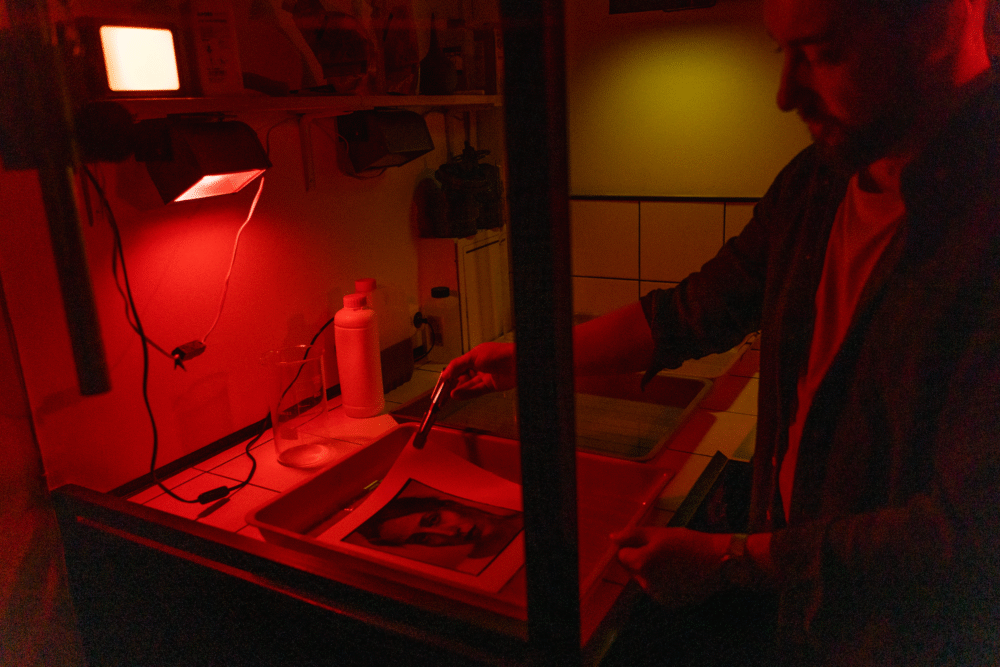Old-school rituals are being revived as a digital detox.

Gen Z, a generation raised on screens and constant connectivity, is paradoxically turning to old-school rituals as a form of rebellion against digital burnout. The endless scroll, the constant notifications, and the pressure to perform online have left many feeling disconnected and overstimulated. These analog practices are a way to consciously unplug, finding a sense of peace and presence that feels elusive in the digital world. It’s a purposeful step back from the hyper-connected, fast-paced nature of modern life.
From the tactile sensation of a physical object to the quiet contemplation of a slow process, these habits are not just a nostalgic trend but a genuine search for meaning and authenticity in a world that often feels ephemeral.
1. The art of letter writing has found a new, personal purpose.

In an age of instant messages and fleeting texts, the act of writing and sending a physical letter has become a deeply meaningful ritual. It’s a slow, deliberate process that forces you to carefully craft your thoughts and emotions, making each word feel more significant. This habit offers a unique kind of intimacy and patience, a tangible connection to someone that transcends the immediacy of digital communication. The letter itself becomes a keepsake, a physical object that can be held and cherished for years to come.
This resurgence is driven by a desire for a more personal and heartfelt form of connection. A handwritten letter is an artifact of time and effort, a testament to the relationship it represents. It’s a deliberate rejection of the fast-paced, often impersonal nature of online conversation, offering a much-needed return to a slower, more intentional way of communicating. The simple joy of receiving a letter in the mail provides a moment of genuine excitement that is rarely found in an email inbox.
2. Reading a physical book offers a welcome escape from screens.

In a world where every screen is a portal to a new distraction, the physical book stands as a defiant sanctuary of focused attention. Holding a book in your hands and turning its pages provides a tactile experience that grounds you in the moment, free from the constant pings and notifications of the digital world. The journey through a narrative becomes a meditative process, allowing your mind to fully immerse itself in the story without the temptation of endless scrolling. It’s a simple yet powerful act of reclaiming your focus.
This ritual is more than just a preference; it’s a deliberate choice to disconnect from the digital noise. A physical book has a clear beginning and end, offering a satisfying sense of completion that an endless stream of online content can never provide. The weight of the book, the feel of the paper, and the visual progress of the pages you’ve read create a tangible sense of accomplishment. It is a calming and peaceful way to engage with a story.
3. Brewing pour-over coffee is a quiet morning meditation.

Pour-over coffee is more than just a way to get caffeine; it’s a deliberate morning ritual that provides a moment of calm before the chaos of the day begins. The process—from grinding the beans and heating the water to slowly pouring in a circular motion—demands your full attention and patience. It’s a mindful activity that engages the senses, with the aroma of the fresh grounds and the slow drip of the coffee. This habit transforms a daily routine into a quiet, focused meditation.
This ritual offers a powerful counterpoint to the rush of grabbing a quick coffee on the way out the door. It’s a way to intentionally slow down and savor a moment of self-care. The effort and care put into brewing a perfect cup provides a sense of accomplishment and a delicious, tangible reward. This practice teaches you to appreciate the small, deliberate actions in your day, providing a peaceful and grounding start to your morning.
4. Hosting in-person dinner parties is a way to connect.

In a culture of quick takeout and virtual hangouts, the traditional dinner party is being revived as a cherished social event. The effort of cooking a meal, setting the table, and gathering friends around a shared table creates a space for genuine, face-to-face connection. This habit is a conscious rejection of the casual and often impersonal nature of online interaction, offering a structured environment for deep conversation and shared experiences. The whole ritual, from preparing the food to cleaning up afterwards, is a communal effort that strengthens bonds.
This practice is driven by a longing for authentic community and the simple pleasure of human connection. A dinner party is an invitation to be present, to put away phones and engage in meaningful dialogue. It’s a way to slow down and savor both the food and the company. The intentionality of a shared meal fosters a sense of belonging and creates lasting memories that transcend a digital chat, offering a powerful sense of togetherness that feels both comforting and real.
5. Writing in a physical journal is a powerful form of self-reflection.

With the proliferation of digital calendars and notes apps, the analog habit of journaling by hand is experiencing a revival as a powerful tool for self-reflection. The physical act of putting pen to paper forces a slower, more deliberate thought process than typing. This habit offers a private, unfiltered space to process emotions, track goals, and record memories without the distraction of a screen. The notebook itself becomes a tangible record of personal growth, a physical archive of thoughts and feelings.
This return to handwritten journaling is a response to the constant pressure of digital performance and the feeling of being perpetually “on.” It’s a way to disconnect from the public-facing aspects of life and engage in a truly private act of introspection. The imperfect handwriting, the ink stains, and the filled pages are all part of the process, making the journal an authentic and personal artifact. This practice offers a calming, meditative outlet, a simple and powerful way to connect with yourself in a deep and meaningful way.
6. Thrifting for clothes is a mindful search for unique items.

Forget fast fashion and online shopping; Gen Z is flocking to thrift stores in search of unique, pre-loved items with a story. The process of sifting through racks and shelves is a mindful and engaging activity, a refreshing alternative to the instant gratification of online retail. Each find feels like a victory, a one-of-a-kind piece that reflects personal style and creativity. This habit is about more than just saving money; it’s about a connection to the past and a rejection of mass-produced consumerism, giving old items a second chance at life.
Thrifting offers an opportunity for self-expression and sustainability. The clothes and items you find are imbued with history, carrying a sense of character that new products lack. This ritual provides a tangible, real-world experience, a break from the monotony of algorithms dictating what you see and buy. It’s a low-stakes adventure that encourages spontaneity and a more thoughtful approach to what you bring into your life, making it a conscious and fulfilling habit.
7. Learning a physical craft is a way to feel productive.

In a world where most consumer products are manufactured by machines, Gen Z is turning to traditional crafts like knitting and crocheting to create something tangible with their own hands. This habit provides a meditative, repetitive action that is both calming and productive. It offers a sense of accomplishment with every stitch and a deep satisfaction in turning a simple ball of yarn into a wearable piece of art. This practice is a hands-on rejection of the passive consumption that defines so much of modern life.
This hobby is driven by a desire for a creative outlet that is both practical and slow. Unlike digital creative pursuits, knitting and crocheting produce a physical object that can be used or gifted, imbuing it with a sense of purpose. It’s a way to reclaim time and attention, focusing on a single, deliberate task rather than jumping between different screens and apps. The act of creation itself offers a powerful antidote to the fast-paced, ephemeral nature of the digital world.
8. The mixtape is the ultimate personal music statement.

Long before streaming playlists, the mixtape was the ultimate form of musical expression and connection. Today, Gen Z is reviving the art of crafting physical mixtapes on cassette tapes or CDs. This habit involves carefully selecting songs, sequencing them in a meaningful order, and often designing personalized artwork. The entire process is a thoughtful and creative act, a tangible way to convey feelings and share a story through music. The mixtape becomes a physical gift, a symbol of time and effort.
This revival is about more than just the music; it’s about the intentionality behind the curation. Unlike a shared digital playlist, a physical mixtape feels more permanent and intimate. It’s a unique and personal artifact that represents a specific moment in time and a relationship with another person. This practice offers a powerful contrast to the algorithmic nature of modern music discovery, putting the power of curation and personal storytelling back into the hands of the creator.
9. Playing board games is a way to have fun without a screen.

In a landscape dominated by video games and online multiplayer, the simple pleasure of a board game night is making a strong comeback. This habit brings people together around a physical table for a shared experience that is both social and competitive. Board games require players to interact face-to-face, read non-verbal cues, and engage in real-time conversation. It’s a deliberate rejection of digital isolation, offering a communal activity that is fun, challenging, and deeply human.
This trend is a response to the need for authentic, screen-free entertainment. Playing a board game provides a structured social environment where people can connect without the distractions of their phones. The physical presence of the board, the pieces, and the cards offers a tactile experience that is both engaging and grounding. This activity fosters a sense of togetherness and friendly competition, creating a space for shared laughter and memorable moments that feel truly present and real.
10. Gardening is a grounding ritual of connection to nature.

Gardening is a ritual that provides a powerful sense of connection to the natural world and a profound antidote to digital burnout. The process of preparing the soil, planting seeds, and tending to growing plants offers a slow, rhythmic activity that grounds you in the present moment. It’s a hands-on, rewarding experience that offers a direct and tangible result for your efforts, whether in the form of beautiful flowers or fresh vegetables. This habit is a way to step away from the artificial glow of a screen and get your hands dirty.
This practice is a living, breathing testament to patience and care. It teaches you to appreciate the slow cycles of nature and the satisfaction of nurturing something from seed to fruition. The quiet moments spent in a garden, away from the constant noise of digital life, are deeply therapeutic and calming. Gardening offers a sense of purpose and connection to a process that is entirely separate from the fast-paced, online world, providing a peaceful retreat for your mind.
11. Cooking elaborate meals at home is a new form of creativity.

In a society of convenience and instant gratification, Gen Z is finding deep satisfaction in the slow and deliberate process of cooking elaborate meals from scratch. This habit is a form of mindful meditation, a creative outlet that engages all the senses. The process of chopping, seasoning, and waiting for a meal to come together is a grounding and rewarding experience. It offers a sense of accomplishment and a physical reward that is both delicious and nourishing. Cooking is an escape from the fast-paced nature of modern life.
This revival of home cooking is about a desire for authenticity and a connection to what we consume. It is a way to be intentional about the food we eat and to appreciate the effort that goes into making it. The shared experience of cooking and eating a meal together with loved ones fosters a sense of community and connection that is hard to find elsewhere. This habit is a powerful way to express care, creativity, and presence in a deeply tangible and satisfying way.
12. Developing film at home offers a tangible creative process.

In a world of instant digital photos, developing film at home is a hands-on ritual that reconnects you to the physical nature of photography. The process, from loading the film into a tank in a dark room to carefully mixing and pouring chemicals, is a precise and patient art. It’s a slow-paced journey that culminates in the magical reveal of an image, an experience that is deeply satisfying. This ritual transforms a fleeting moment into a tangible, permanent piece of art.
Developing film is a powerful way to rebel against the fleeting, disposable nature of digital photography. The limited number of shots on a roll forces a more thoughtful and deliberate approach to capturing a moment. The subtle imperfections and unique character of film photography are celebrated, not discarded. This practice offers a rewarding sense of creation and ownership, a connection to the material process that feels worlds away from clicking a button and seeing an image instantly appear.
